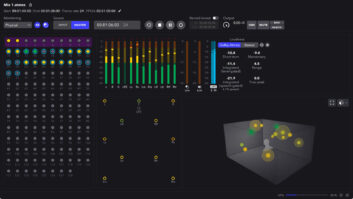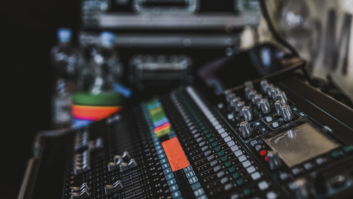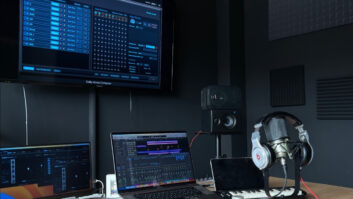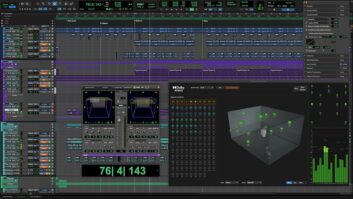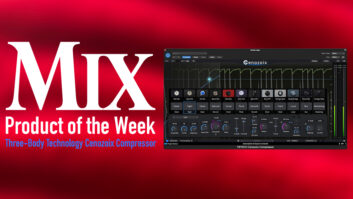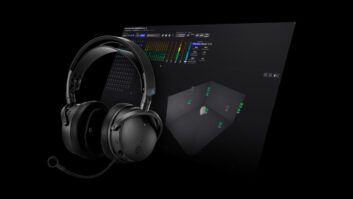
New Wave provocateur turned internet audio pioneer turned professor Thomas Dolby is out and about, promoting his new tech memoir, The Speed of Sound. Speaking with Pro Sound News about the tome, the discussion covered more topics than space would allow in our December, 2016 issue’s article. Accordingly, here are some of his thoughts on education, technology, Virtual Reality and inspiration.
On his appointment as Johns Hopkins University’s first Homewood Professor of the Arts:
I’m helping students navigate the music and sound side of the DIY filmmaking process.
More universities have created posts for what you might call ‘professors of the practice,’ who have recent, real-world and workforce experience. It’s sometimes quite hard for more scholarly academics to mix that up. But if you’re going to have a film school that is going to turn out students who are ready for the workforce then it’s vital that you have some real-world experience.
On his role in Johns Hopkins University’s community outreach in Baltimore:
I have an after-school class called the Hip-Hop Workshop, where local middle-school kids come in and use our computer lab. They learn to make beats in Logic and Pro Tools, and add their own vocals and in some cases even make music videos on our TV stage.
On the new generation of digital video cameras, which offer great picture quality but not great sound:
It’s easy for the students to overlook that, and the fact that you still have to do sound the old-fashioned way, with a guy with a boom mic and microphones hidden in plant pots, with a guy with headphones mixing the sound. It doesn’t matter how many pixels are in the picture if it has bad sound.
I’m here to remind them of that, and that music is a crucial piece of the filmmaker’s arsenal. Although licensing procedures are changing at a snail’s pace, you still need to do that the old-fashioned way as well. It’s easy enough to get hold of some high-quality music from an up-and-coming band who are willing to circumvent typical licensing laws.
On the challenge of keeping up, as a teacher, with current audio software:
I think the challenging thing [for audio schools] is that technology is changing so rapidly. The evidence of that is right there on your student’s laptop. If the student chooses to dive headlong into a software synthesizer or a DAW and work with it as obsessively as people play Minecraft, it’s not going to take very long before they are streets ahead of the instructors. Unless the instructors are spending a decent amount of their time in real-world settings, there’s no way they’re going to keep up.
The challenge for any school is, do you attempt to keep abreast of it, or do you teach them fundamentals? A lot of the metaphors for audio software interfaces—Pro Tools or some software synth—were handed down from the analog world. Pro Tools still looks like an analog mixing board. However sophisticated the software versions get, they’re all going to be descendants if the same ancestor. In a way, maybe you should spend your time at an analog board in a studio teaching the students about signal flow and about how to work with creative musicians.
One thing that’s easy for the students to forget is that you can’t treat musicians the way you treat a dumb machine. There is this magic when you capture the take. During that magic period the studio must be completely invisible; it has to be transparent. It’s about the communication between the musicians. It would be much better for students to learn how to pull that off at a university level, and spend days or weeks with their heads buried in some piece of software on their own time.
On classic analog hardware synths versus software synths:
I remember when keyboard modules first became popular at the beginning of the ‘90s. I put together a rack with a module for everything and a MIDI keyboard, and got a very sore neck from trying to see a small LED screen and flipping through parameters and submenus. After a period of probably 12 years during which I hadn’t played my Roland Jupiter 8, I got it out of storage and immediately my fingers went to the right knobs. There is something to be said for the muscle memory that comes with knobs and sliders.
On the promise of Virtual Reality:
I haven’t tried out all the new systems—Oculus, Gear—but there are some interesting philosophical questions that [VR] brings up. In linear entertainment, we’ve come to accept in the last 100 years or so that there can be an orchestra playing somewhere off screen telling us how to feel about a character or the drama. But the promise of real-time interactive entertainment like Virtual Reality is that the user is at liberty to create their own drama and emotion. The question comes, is it right that we should try to enhance that with music? If it is right, so that we don’t turn our backs on decades of the film composer’s art—in terms of how to match music to picture—are there any smarts we can put into the audio engine which will do enough in real-time manipulation to match the action?
On the fact that good audio is not a high priority in most VR projects:
Sound and music have always been second-class citizens. In the film world, old-time filmmakers have come to recognize how crucial great sound is, and hopefully that wisdom will get passed on to people making virtual reality and interactive entertainment.
With the available computation that you have it would pay dividends to assign some of that to the audio. In any medium it has been proven over and over again that if you have a slider that goes between video quality on one end and audio quality on the other end, the public generally won’t tolerate poor audio. But they will tolerate quite poor video.
On whether he is tempted to apply his own technical expertise and experience with Virtual Reality in the early 1990s to the latest generation of technology:
It certainly shares technologies [with cinema] but the same problems that were around when I first got involved in the early ‘90s are still there. I’m quite interested in it because it’s approaching the tipping point with multiple large companies in a race (beep) to become the standard.
But the questions remain. For example, I was at Microsoft looking at their HoloLens, which has quite a sophisticated spatialized audio system on it. But it’s still up in the air for them how much true immersion you really need, because the advantage of their system is that it’s augmented reality. They can do a pretty good job of doing spatialized sound with fully enclosed headphones, but they’ve opted for headphones that give you a little sound but keep your ears exposed; they have speakers in the headband.
But my commitment is to teaching. But what we might do is start investigating it in our studies at the university. John Hopkins has unique collaboration possibilities, including on the cognition side. We could, for example, work with the neurology department at the hospital and monitor brain states while people are playing these games. Hollywood tends to get its feedback by users filing in a form at the end of a screening. We could do that a lot more scientifically.
On mentors and inspiration:
When I got to Silicon Valley, I had the benefit of a very wise board member and venture capitalist called Joe Rizzi. He was really a good influence on me when I was putting my company together.
Mutt Lange, as a producer, was a real mentor to me. Not that I necessarily like all of his records; only that he had a different lens from everybody else. He would dissect things in the most minute detail. A lot of his preparation work was done before he got to the studio, because he believed that with the perfect arrangement, engineering was far less important. But you can’t slap a band-aid on a bad arrangement to begin with. We would often routine songs in great details with a band in the rehearsal room before we ever got into the studio.
When I got to work side by side with talented people, I loved to watch how they did what they did. I learned a lot from a music editor that I worked with early on, which really helped my directorial chops. I like to watch skillful people doing their thing.

